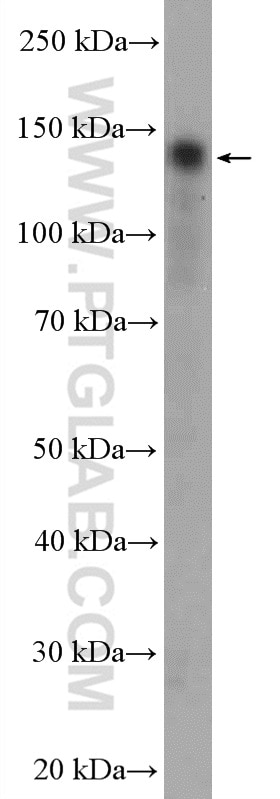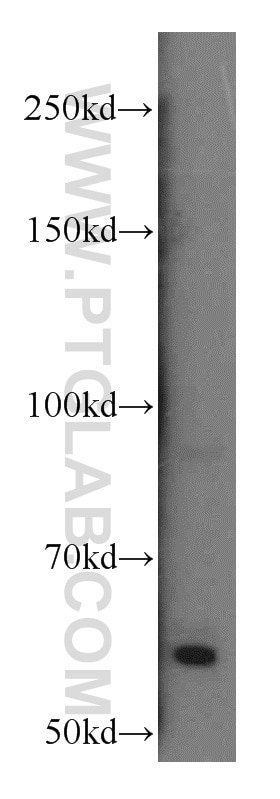- Featured Product
- KD/KO Validated
Calcium Sensing Receptor Polyclonal antibody, PBS Only
Calcium Sensing Receptor Polyclonal Antibody for WB, Indirect ELISA
Host / Isotype
Rabbit / IgG
Reactivity
human, mouse, rat
Applications
WB, Indirect ELISA
Conjugate
Unconjugated
Cat no : 19125-1-PBS
Synonyms
Validation Data Gallery
Tested Applications
Recommended dilution
| Application | Dilution |
|---|---|
| It is recommended that this reagent should be titrated in each testing system to obtain optimal results. | |
Product Information
19125-1-PBS targets Calcium Sensing Receptor in WB, Indirect ELISA applications and shows reactivity with human, mouse, rat samples.
| Tested Reactivity | human, mouse, rat |
| Host / Isotype | Rabbit / IgG |
| Class | Polyclonal |
| Type | Antibody |
| Immunogen | Peptide 相同性解析による交差性が予測される生物種 |
| Full Name | calcium-sensing receptor |
| Calculated molecular weight | 121 kDa |
| Observed molecular weight | 120-140 kDa |
| GenBank accession number | NM_000388 |
| Gene symbol | Calcium Sensing Receptor |
| Gene ID (NCBI) | 846 |
| RRID | AB_10646434 |
| Conjugate | Unconjugated |
| Form | Liquid |
| Purification Method | Antigen affinity purification |
| Storage Buffer | PBS Only |
| Storage Conditions | Store at -80°C. |
Background Information
CASR, also named as GPRC2A, PCAR1, belongs to the G-protein coupled receptor 3 family. Changes in extracellular calcium are thought to modulate a balance between proliferation and differentiation in a variety of cell types. The activity of CASR is mediated by a G-protein that activates a phosphatidylinositol-calcium second messenger system. It has been shown to play a major role in regulating parathyroid hormone secretion and subsequently influencing the calcium concentration of extracellular fluids. In normal primary keratinocytes and breast epithelial cells, proliferation is inhibited and elevated extracellular calcium levels trigger differentiation. Malignant transformations of these cell types are accompanied by a loss of responsiveness to the anti-proliferative effects of elevated extracellular calcium. Several disorders of calcium homeostasis have been linked to mutations in the CaSR. These include familial hypocalciuric hypercalcemia (FHH), neonatal severe hyperparathyroidism (NSHPT), and autosomal dominant hypocalemia (ADHypo). The 60-65 kDa band detected by this antibody might represent a degradation product of CASR (PMID: 15718278).





